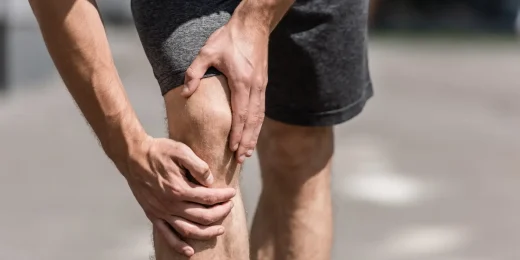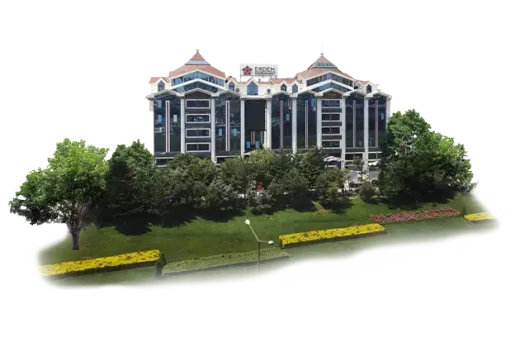Summer invites us outdoors into the sun, onto the fields, and into active lifestyles. Whether it’s beach volleyball, long-distance running, hiking, or pickup football with friends, summer sports are a favorite way to stay fit and enjoy the season. But with warmer weather, harder surfaces, and dehydration risks, the chance of injuries and muscle strains increases significantly.
From knee sprains to muscle cramps and overuse injuries, summer sports pose specific challenges to the body. In this article, we’ll explore the most common injuries in summer sports, what causes them, how to prevent them, and why proper recovery protocols like cold therapy and hydration matter more than ever during the hotter months.

What Are the Most Common Injuries in Summer Sports?
The nature of summer sports often played outdoors, on uneven or hard terrain, and in high temperatures makes certain types of injuries more frequent. These include:
1. Ankle and Knee Sprains
Quick directional changes, sudden stops, or jumping on uneven ground can lead to ligament injuries, especially in the ankles and knees. Soccer, basketball, and running are high-risk activities.
2. Muscle Strains and Pulls
Sudden bursts of speed or overextension of muscles especially when not properly warmed up can cause hamstring pulls, calf strains, or groin injuries.
3. Shoulder Injuries
Sports like swimming, tennis, or throwing activities often cause rotator cuff inflammation or impingement syndrome, particularly if done repetitively or with poor form.
4. Heat-Related Muscle Cramps
High temperatures lead to excessive sweating, which drains the body of electrolytes. The result? Painful cramps that stop you mid-activity.
5. Tendonitis and Overuse Injuries
Repetitive stress on joints especially knees, elbows, and Achilles tendons can lead to chronic inflammation if not managed properly.
6. Back Injuries
Running or cycling with poor posture, or lifting without proper support, can lead to lower back strains or spinal misalignments.
Which Sprains and Strains Are Most Common?
Among all the injuries, knee and ankle sprains top the list during summer months. These are particularly common in sports that involve:
- Lateral movement, like tennis or basketball
- Unstable terrain, such as trail running or beach sports
- Barefoot play, where footwear doesn’t support the joints properly
The most affected structures include:
- Anterior cruciate ligament (ACL) in the knee
- Medial collateral ligament (MCL)
- Ankle ligaments, especially the lateral ones during an inversion injury
If not treated correctly, these injuries can result in long-term joint instability and even require surgical intervention.
How to Prevent Knee Sprains and Other Joint Injuries
While no one can guarantee complete injury prevention, strategic preparation and body awareness significantly reduce your risk. Here’s how:
1. Warm Up Properly
Start each session with at least 10–15 minutes of dynamic stretching and light aerobic activity. This prepares muscles and joints for higher intensity.
2. Strengthen Supporting Muscles
A strong set of hamstrings, quadriceps, calves, and glutes keeps your knees aligned and protected during explosive movements.
3. Wear the Right Footwear
Choose sport-specific shoes that offer arch and ankle support, especially on uneven terrain or hard surfaces.
4. Use Knee Braces if Needed
If you have a history of knee injuries, wearing a supportive brace or compression sleeve during activity can stabilize the joint.
5. Avoid Overtraining
Repetitive strain without proper recovery leads to ligament fatigue and increased injury risk. Respect rest days and adjust intensity.
Is Cold Therapy Necessary After Exercise?
Yes, especially during the summer months, when inflammation and overheating are more likely.
Benefits of Cold Therapy Post-Exercise:
- Reduces inflammation by constricting blood vessels
- Eases muscle soreness by slowing down metabolic activity
- Minimizes swelling in joints or soft tissues
- Helps the body transition to recovery mode faster
When to Apply It:
- After high-impact activities (e.g., running, soccer)
- If you feel localized pain, swelling, or joint stiffness
- After long sessions in hot weather, where overheating is likely
Best Methods:
- Ice packs for 15–20 minutes on affected areas
- Cold showers or contrast therapy (hot/cold cycles)
- Ice baths, especially for full-body recovery after endurance sports
Can Excessive Sweating Lead to Muscle Cramps or Strains?
Yes. Excessive sweating during summer sports can contribute directly to cramps and even muscle pulls, especially if hydration and electrolyte balance are not maintained.
When you sweat, you lose:
- Sodium
- Potassium
- Magnesium
- Chloride
These minerals are essential for muscle contraction and nerve signaling. Without them, your muscles become overexcitable, leading to involuntary contractions aka cramps. Dehydrated muscle tissue is also more prone to micro-tears and strains.
How to Prevent This:
- Drink electrolyte-enhanced fluids, not just plain water.
- Include salted foods or electrolyte tablets in your nutrition plan.
- Avoid caffeine and alcohol before training. They act as diuretics.
- Eat potassium-rich foods (bananas, sweet potatoes, avocados).
What Are the Risks of Exercising Without Warming Up?
Skipping a warm-up is like asking your car to go from 0 to 100 without starting the engine. It’s one of the biggest contributors to preventable injuries in all seasons, but especially during summer when tight, dehydrated muscles are more vulnerable.
Risks of Skipping Warm-Ups:
- Torn ligaments and muscles
- Joint strain or dislocation
- Sudden drops in blood pressure
- Increased post-exercise soreness
A Good Warm-Up Should Include:
- 5 minutes of light cardio (jumping jacks, jogging in place)
- Dynamic stretches (leg swings, arm circles)
- Joint mobility drills (hip openers, shoulder rolls)
- Light practice of sport-specific moves (e.g., slow tennis swings)
Warming up gradually raises muscle temperature, improves flexibility, and prepares your cardiovascular system for more intense exertion.
When Should You See a Doctor for a Sports Injury?
Minor strains and bruises usually resolve with RICE therapy (Rest, Ice, Compression, Elevation). But medical attention is necessary if:
- Pain persists beyond 48–72 hours
- There’s swelling or instability in a joint
- You cannot put weight on a limb
- You hear a pop during the injury
- There’s visible deformity or severe bruising
Delaying professional care can lead to chronic pain, limited range of motion, or more severe complications like ligament tears or stress fractures.
Trusted Injury Care for Athletes

Whether you’re dealing with a mild strain or recovering from a knee sprain, timely and expert care is crucial for returning to your sport safely. At Erdem Hospital in Istanbul, orthopedic specialists and physical therapists provide comprehensive sports injury management from diagnosis to rehabilitation. With over 37 years of experience in musculoskeletal care, Erdem Hospital offers personalized recovery programs, imaging services, and modern therapies such as cold laser therapy, joint injections, and guided physiotherapy. For both amateur and professional athletes, Erdem Hospital supports your performance and protects your future mobility.